Catholic prayers for the dead, such as the Eternal Rest prayer, seek to comfort the deceased and the grieving, reflecting faith in eternal life and divine mercy.
Overview of the Importance of Praying for the Deceased
Praying for the deceased is a deeply rooted Catholic tradition, expressing love, hope, and solidarity with the departed. It reflects belief in the afterlife and the possibility of spiritual purification. Through prayers like the Eternal Rest, the faithful seek to comfort the souls of the deceased, aiding their journey toward eternal peace. This practice also brings consolation to the bereaved, strengthening their faith and fostering a sense of community. The Church emphasizes that such prayers are a sacred duty, uniting the living and the dead in a bond of eternal hope.
Significance of Eternal Rest in Catholic Tradition
Eternal rest embodies the Catholic belief in a peaceful afterlife free from suffering. Rooted in Scripture, it reflects the hope of reuniting with God and the deceased in paradise. The prayer seeks divine light and peace for the departed, aligning with the Church’s teachings on the soul’s journey after death. This concept is central to funeral rites, comforting the bereaved while affirming faith in resurrection and eternal life.
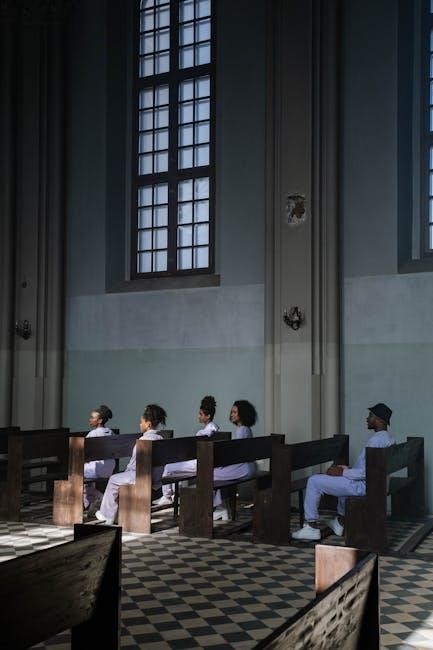
The Eternal Rest Prayer
The Eternal Rest Prayer is a sacred plea for the deceased, asking God for eternal rest, perpetual light, and peace, reflecting hope in divine mercy.
Structure and Content of the Eternal Rest Prayer
The Eternal Rest Prayer is a concise yet profound invocation, typically beginning with “Eternal rest grant unto them, O Lord.” It requests divine light, peace, and rest for the deceased, emphasizing hope in eternal life. The prayer often includes a communal remembrance of all faithful departed, reflecting Catholic belief in the unity of the Church. Its structure balances reverence with simplicity, making it accessible for both private devotion and liturgical use, while expressing trust in God’s mercy and the promise of resurrection.
Scriptural Basis for the Prayer

The Eternal Rest Prayer draws inspiration from Scripture, particularly passages like 2 Corinthians 5:8 (“to be with the Lord”) and Revelation 21:4 (“no more death or pain”). It reflects the hope of eternal life and divine mercy, aligning with Catholic teachings on the afterlife. The prayer’s request for perpetual light mirrors biblical imagery of God as light (1 John 1:5). Its emphasis on rest and peace is rooted in scriptural promises of eternal rest for the righteous (Hebrews 4:11, Wisdom 3:1-3).

Catholic Teachings on the Afterlife
Catholic teachings on the afterlife emphasize the soul’s journey to heaven or hell, with ultimate reunion in God’s presence, reflecting divine justice and mercy.
The Concept of Purgatory and Its Relation to Prayers for the Dead
Purgatory, a Catholic doctrine, holds that souls undergo purification before entering heaven, freed from earthly sins. Prayers for the dead, such as the Eternal Rest prayer, are believed to aid this process, offering spiritual support and comfort. These prayers reflect the Church’s teaching on the communion of saints, where the living and deceased are united in faith. By praying for the dead, the faithful demonstrate solidarity and hope, seeking divine mercy for the souls’ purification and eternal peace.
The Role of Prayer in Aiding the Souls of the Deceased
Prayer plays a vital role in aiding the souls of the deceased by offering spiritual support during their purification in Purgatory. Through prayers like the Eternal Rest prayer, the faithful seek to comfort the departed, asking for divine mercy and eternal light. This practice reflects the Catholic belief in the communion of saints, where the living and deceased are united in faith. By praying for the dead, the faithful not only assist in their journey toward heaven but also find solace in their own grief, strengthened by the hope of eternal reunion.
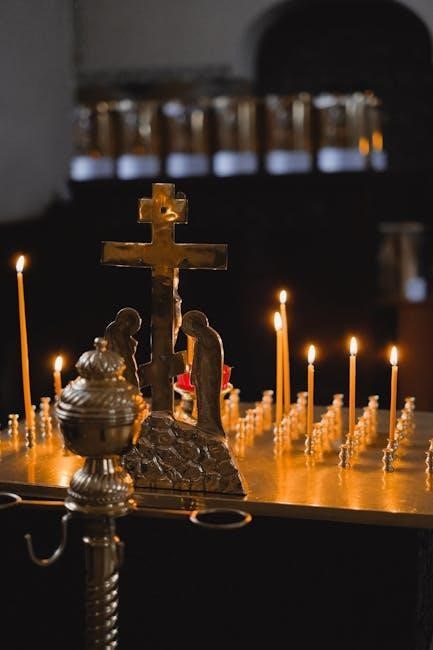
Prayer for Eternal Rest
The Eternal Rest prayer seeks to comfort the deceased, asking for divine mercy and perpetual light, while offering solace to the grieving through its sacred words.
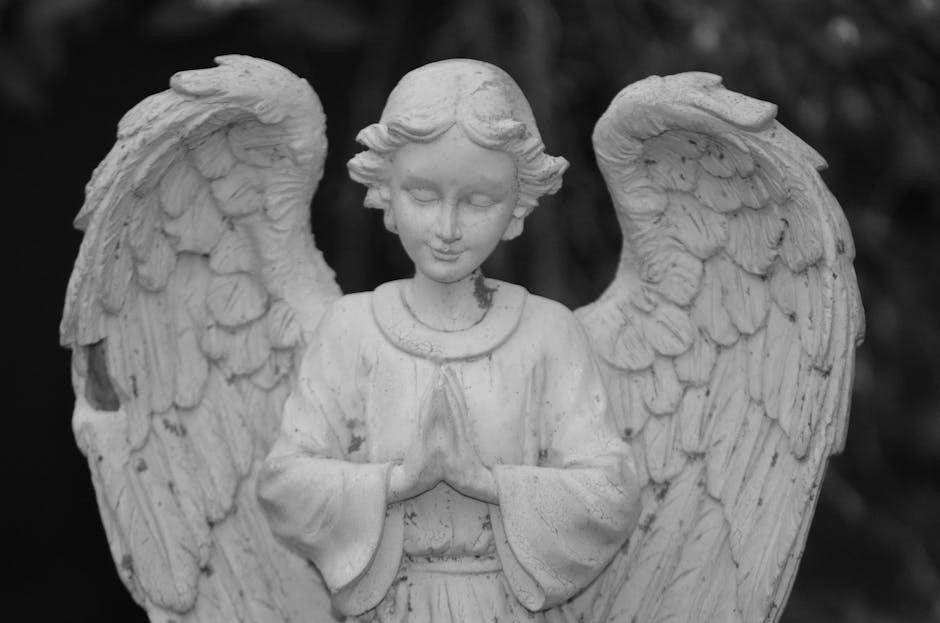
Text of the Prayer and Its Variations
The Eternal Rest prayer begins with “Eternal rest grant unto them, O Lord, and let perpetual light shine upon them.” It continues, “May their souls and the souls of all the faithful departed rest in peace. Amen.” Variations include petitions for individuals, such as “Eternal rest grant unto him/her, O Lord,” and collective prayers for all the deceased. Additional phrases, like “May Christ support us all the day long,” offer comfort to the bereaved. These variations reflect the prayer’s adaptability for different contexts and needs.
When and How to Recite the Prayer
The Eternal Rest prayer is typically recited during funeral masses, memorial services, and personal devotionals. It is often prayed in November, a month dedicated to remembering the deceased. The prayer may be recited individually or communally, with a leader and response format during liturgies. It is also included in the Liturgy of the Hours and can be prayed at any time for comfort and to assist the souls of the deceased. This practice reflects the Catholic belief in the power of prayer to bring solace to the bereaved and aid the departed on their journey to eternal life.

Praying for the Dead in Catholic Liturgy
Catholic liturgy incorporates prayers for the dead, such as the Eternal Rest prayer, during funeral masses and memorials, offering comfort to the grieving and spiritual aid to the deceased.
Prayers During Funeral Masses and Memorials
During funeral masses and memorials, Catholics recite the Eternal Rest prayer, seeking eternal peace for the deceased. This prayer is often incorporated into the liturgy, offering solace to mourners and spiritual support for the departed. It reflects the Church’s belief in the power of prayer to aid souls in their journey toward eternal life, emphasizing trust in God’s mercy and the hope of resurrection. These prayers are a vital part of Catholic tradition, providing comfort and hope to the faithful.
The Role of the Liturgy of the Hours in Praying for the Dead
The Liturgy of the Hours, a sacred tradition of prayer, plays a significant role in praying for the dead. Through structured daily prayers, including Vespers and Lauds, the faithful commemorate the deceased, seeking eternal rest for their souls. This communal practice strengthens the bond between the living and the dead, reflecting the Church’s belief in the power of united prayer. It also offers comfort to the bereaved, reminding them of the hope of eternal life and the resurrection.
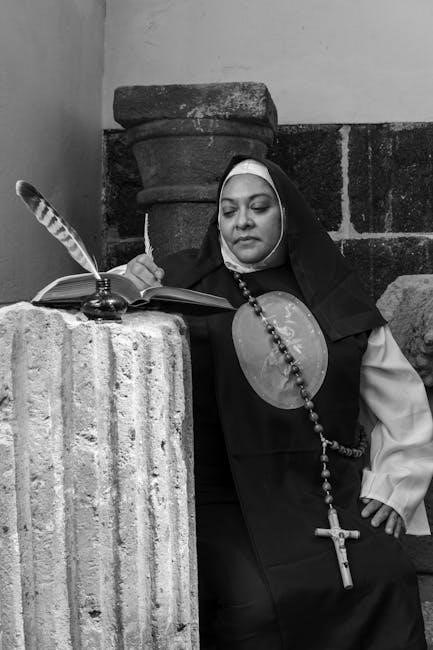
Traditions Surrounding November and the Deceased
Catholic traditions in November honor the deceased through prayer, particularly on All Souls’ Day, emphasizing the Eternal Rest prayer and Masses for their souls’ peace.

All Souls’ Day and the Catholic Tradition of Commemorating the Dead
All Souls’ Day, celebrated on November 2nd, is a sacred Catholic tradition honoring the deceased. It emphasizes praying for souls in purgatory, seeking eternal rest through Masses and the Eternal Rest prayer. This day reflects the Church’s belief in the communion of saints and the power of prayer to aid the deceased. Catholics worldwide offer prayers, Masses, and reflections, seeking peace for the departed and consolation for the grieving, embodying the faith’s commitment to spiritual solidarity beyond death.
Prayer and Reflection During the Month of November
November is a sacred month for Catholics to honor the deceased through prayer and reflection. Traditionally, the faithful recite the Eternal Rest prayer, seeking eternal peace for departed loved ones. Many also visit cemeteries to pay respects and attend special Masses. The Liturgy of the Hours and rosary are commonly prayed, emphasizing spiritual support for souls in purgatory. This period fosters a deeper connection with the deceased and provides solace to the grieving, reinforcing the Church’s teachings on the importance of intercession for the dead.
Reflection during November encourages mindfulness of mortality and the afterlife, aligning with Catholic beliefs in the communion of saints. It is a time to remember the deceased with gratitude and hope, trusting in God’s mercy and the promise of eternal rest.
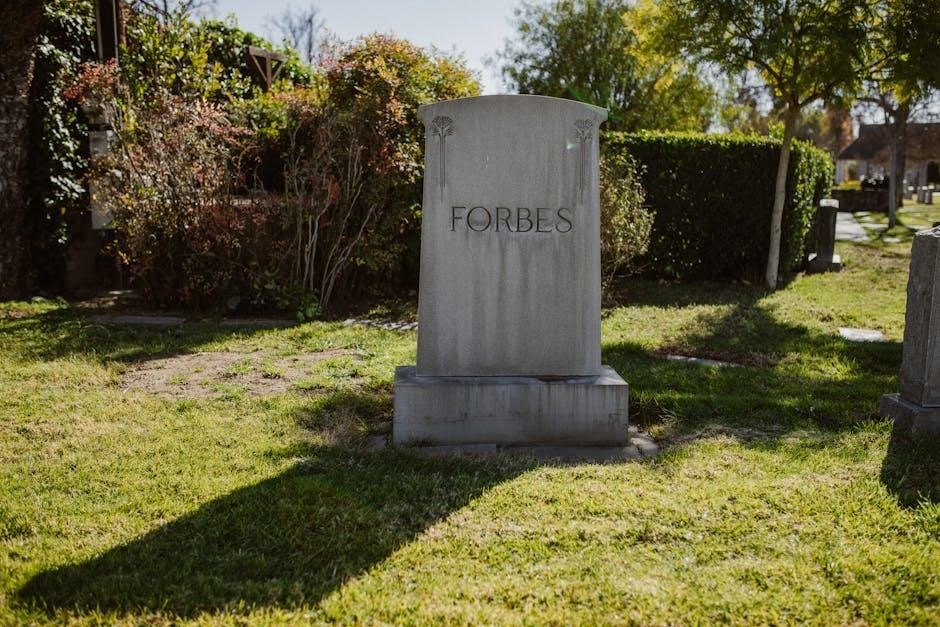
The Role of the Community in Praying for the Dead
The community plays a vital role in praying for the dead through communal prayers, offering support and comfort to the grieving while seeking eternal rest for the deceased.
Communal Prayers and Their Impact on the Faithful
Communal prayers for the dead, such as the Eternal Rest prayer, foster unity among the faithful, offering comfort to the grieving and reinforcing faith in eternal life. These collective devotions provide solace, strengthen community bonds, and remind believers of their shared spiritual journey. By praying together, the faithful express solidarity with the deceased and their families, while also reaffirming their trust in God’s mercy and the promise of eternal peace.
Prayer as a Means of Consolation for the Bereaved
Prayer serves as a profound source of comfort for those grieving the loss of loved ones. The Eternal Rest prayer, often recited collectively, provides solace by expressing trust in God’s mercy and the promise of eternal peace. It helps the bereaved process their sorrow, find strength in faith, and experience healing through communal support. By praying for the deceased, the faithful not only honor their memory but also find spiritual reassurance, fostering a sense of hope and unity during difficult times.
Catholic prayers for eternal rest offer comfort and hope, guiding the deceased to eternal peace and supporting the bereaved through faith in divine mercy;
Final Reflections on the Catholic Prayer for Eternal Rest
The Catholic prayer for eternal rest embodies compassion and hope, offering solace to the grieving while affirming belief in eternal life. By entrusting the deceased to God’s mercy, these prayers not only seek peace for the departed but also strengthen the faith of the living. Rooted in scripture and tradition, they remind us of the enduring bond between the Church Militant and the Church Suffering, fostering unity in prayer across the spiritual realm.